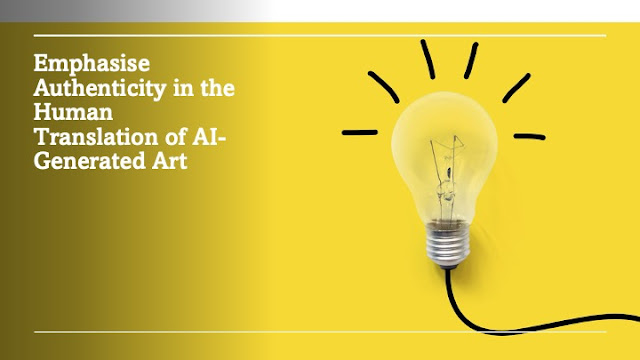Strategies for AI in Art and Design Education
Developing Strategies for the Use of Artificial Intelligence in Art and Design Education
By Joshua Y'Barbo
7 March 2024
As an artist-in-residence for the TEAM LEWIS Foundation and a lecturer at the University of the Arts London, I research and explore the connections between the arts and communication industry for cross-sector audiences. I also teach various theoretical, practical, and research-based problem-solving skills transferable across art and design. I've recently responded to the debates on how to use AI tools in art and design education.
AI tools are becoming more widespread in art and design education and the creative industries. However, how are we to address those who argue that AI tools could ultimately replace the need for human creativity and artistic expression? What are the ethical implications of using AI tools in creating art, such as the potential for perpetuating biases or stereotypes? What about the potential for AI tools to contribute to a homogenisation of artistic styles and a loss of diversity in the art world? To address these concerns, we must develop strategies to adapt to this change.
The AI in Education Conference 2024, happening in London this May, provides five critical examples of AI strategies for education. These strategies include AI-enhanced personalised learning, such as the University of Cambridge's pioneering AI adaptive learning systems that have revolutionised customised learning and have improved learning pathways by 40%. Another strategy is AI-assisted grading and feedback, which includes the University of Edinburgh's AI grading and feedback system that has revolutionised education. The strategic use of AI also includes student predictive analytics, such as the University of Manchester's AI-driven predictive analytics, which has significantly reduced student dropout rates by over 50%. Snippet-based AI learning is another strategy, such as the University of Bristol's use of snippet-based AI bite-sized educational content that has boosted student learning retention by a whopping 38%. Finally, AI plagiarism innovation is another strategy we can use, such as the University of Glasgow's use of AI to reduce plagiarism by 45% and uphold the highest standards of learning integrity (Sullivan, 2024).
It's fascinating to see how AI tools have advanced and the opportunities they create. However, despite their capabilities, we should remember that these tools need more human touch (Mikalonytė & Kneer, 2022). We must add our touch to ensure that AI-generated art remains engaging and personalised. This way, we can make it stand out and capture the essence of our creativity, allowing us to revisit perspectives on Sartre's view of authenticity. For example, In The Journal of Aesthetics and Art Criticism, from 1988, Bruce Baugh argued:
[…] that authenticity can function as both a descriptive and critical concept in relation to works of art: critically, it is aesthetically better for works of art to be authentic than inauthentic, and descriptively, not only are there specific features a work of art must have in order to be "authentic," but the concept of authenticity may shed some light on what is distinctive about works of art, by indicating what a work of art must be like to be successful.
When incorporating AI tools in visual communication, such as Adobe's generative tools in Photoshop or text-to-vector in Illustrator, human translation is essential to create more authentic artwork and conclude what constitutes a successful piece of art when AI is involved.
Moreover, understanding the benefits and drawbacks of using AI-generated art in art and design education and industry is crucial. AI tools can enhance personalised learning, grading and feedback systems, student predictive analytics, and learning retention rates. However, potential issues include '[…] reputational damage, economic loss, plagiarism, and copyright infringement' (Jiang et al., 2023). To avoid these issues, it is essential to prioritise academic rigour through accurate referencing and authenticity through human intervention and make students aware of how AI uses their data to learn and how to learn from AI tools.
Adapting to the increasing use of AI tools in the art and design industry requires us to emphasise the authenticity of human translation of AI-generated art into the physical world, co-learn new skills alongside AI, and understand the potential benefits and harms of using AI-generated art without criticality. By doing so, we can use AI tools to create innovative and creative art pieces that challenge our perceptions of art and creativity while maintaining our work's emotional and creative authenticity.
Reference:
Baugh, B. (1988) 'Authenticity revisited', The Journal of Aesthetics and Art Criticism, 46(4), p. 477. doi:10.2307/431285.
Jiang, H.H. et al. (2023) 'Ai art and its impact on artists', Proceedings of the 2023 AAAI/ACM Conference on AI, Ethics, and Society [Preprint]. doi:10.1145/3600211.3604681.
Mikalonytė, E.S. and Kneer, M. (2022) 'Can artificial intelligence make art?: Folk intuitions as to whether AI-driven robots can be viewed as artists and produce art', ACM Transactions on Human-Robot Interaction, 11(4), pp. 1–19. doi:10.1145/3530875.
Selig, B. (2018) Artificial Intelligence: The New Artistic Revolution?, Art UK. Available at: https://artuk.org/discover/stories/artificial-intelligence-the-new-artistic-revolution?gad (Accessed: 05 March 2024).
Sullivan, J. (2024) 'AI in Education Forum', 5 February.
What is AI art, and how is it made? (no date) https://www.adobe.com/. Available at: https://www.adobe.com/uk/products/firefly/discover/what-is-ai-art.html (Accessed: 05 February 2024).
*Generated with assistance from AI tools









Comments
Post a Comment